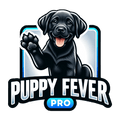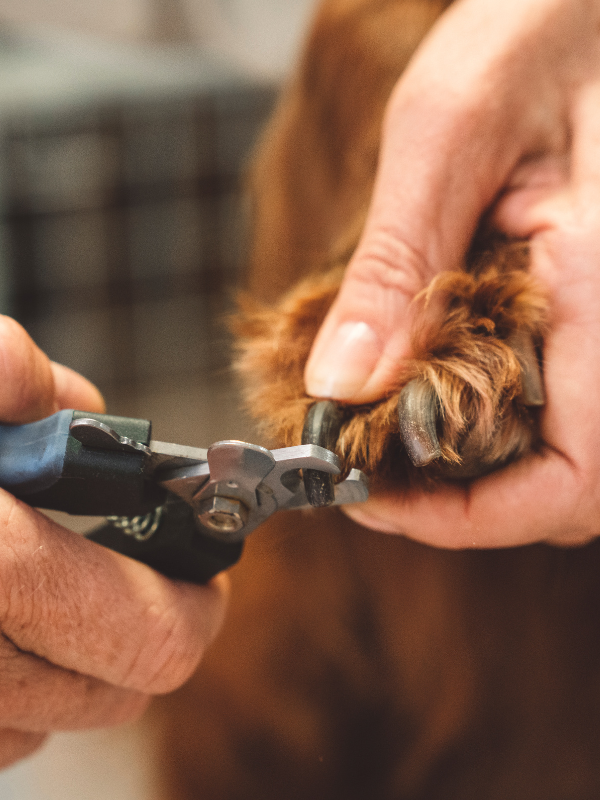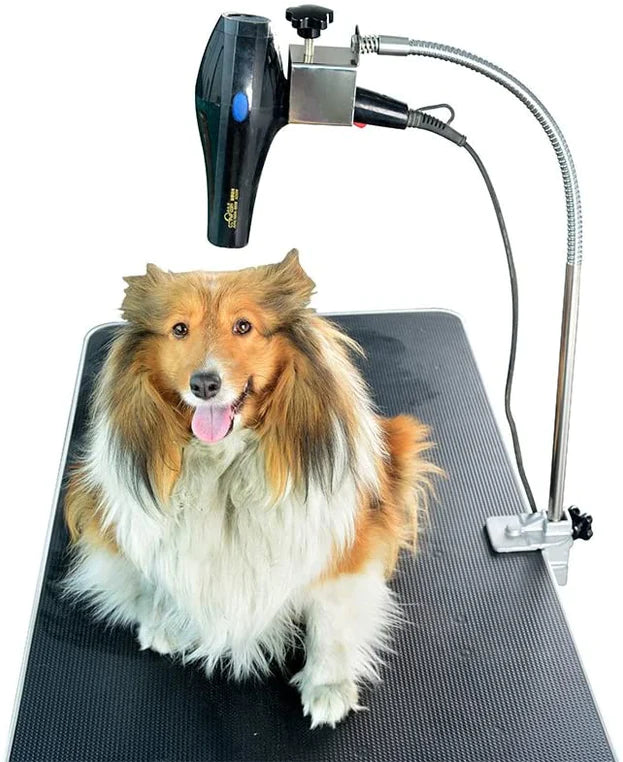737-215-3211

Ultimate Puppy Grooming Guide: Essential Tips for First-Time Dog Owners
Understanding the Importance of Puppy Grooming
Grooming your puppy is more than just about keeping them looking adorable, it plays a crucial role in their overall health and well-being. Regular grooming helps to identify potential skin conditions, parasites, and abnormalities that might be hidden under their fur. Not to mention, it also fosters a strong bond between you and your fur-baby.
Establishing a Regular Grooming Routine
Establishing a regular grooming routine early on is critical. This not only keeps your puppy's coat clean but also gets them accustomed to being handled - making vet visits and other necessary procedures less stressful in the future.
Basic Puppy Grooming Essentials
Coat Grooming
Brushing
Depending on your puppy's breed and coat type, the frequency of brushing will vary. However, regular brushing helps to remove dirt, prevent tangles, and distribute oils that keep your puppy's fur healthy and shiny.
Bathing
Bathing your puppy is necessary to keep their skin clean and healthy. But remember, puppies have sensitive skin, so use a mild dog shampoo and be sure not to overdo it.
Paw Care
Nail Trimming
Nail trimming is a necessary part of a puppy's grooming routine. If left untrimmed, long nails can lead to discomfort, pain, or even injury. Here's a simple step-by-step guide on how to properly trim your puppy's nails:
-
Prepare the Right Tools: Invest in a good-quality dog nail clipper. There are different types available, including guillotine clippers, scissors clippers, and grinders. Guillotine clippers and scissors clippers are generally easier to use, while grinders gradually file down the nail and can be a good option for dogs scared of clippers.
-
Find a Quiet Place: Choose a calm, quiet area to trim your puppy's nails. This can help reduce anxiety and make the process smoother.
-
Get Your Puppy Comfortable: Start by gently touching your puppy's paws to get them used to being handled. Reward them with treats and praise to create a positive association.
-
Identify the 'Quick': The quick is a vein that runs into the nail. It's often visible as a dark line through the nail. Avoid cutting into the quick as it can cause pain and bleeding. If your puppy has dark nails and the quick isn't visible, only trim a little bit at a time.
-
Trim the Nails: Hold your puppy's paw firmly but gently. Using the clippers, make a cut at a 45-degree angle from the bottom of the nail. Make sure you're cutting away from the quick. It's better to make several small cuts than one large one.
-
Reward Your Puppy: After each nail, reward your puppy with praise and a treat. This will help reinforce the nail trimming as a positive experience.
-
If You Cut the Quick: If you accidentally cut into the quick, don't panic. It may bleed, but it's not a serious injury. Apply styptic powder to the nail to stop the bleeding.
If your puppy is very nervous, or if you're uncomfortable trimming the nails yourself, you can always ask a veterinarian or a professional groomer to do it. With practice and patience, nail trimming can become a stress-free part of your puppy's grooming routine.
Paw Cleaning
Clean your puppy's paws regularly to remove debris and check for any injuries or infections.
Dental Care
Dental care is an often-overlooked aspect of puppy grooming. Regular tooth brushing using a dog-friendly toothpaste can help prevent oral diseases.
Ear Cleaning
Puppies can be prone to ear infections, so it's important to keep their ears clean. Be sure to use a vet-approved ear cleaning solution.
Eye Care
Wipe around your puppy's eyes gently with a damp cloth to remove any dirt or discharge. Be careful not to touch the eye itself.
Advanced Puppy Grooming
Haircuts
Some breeds may require regular haircuts. It's best to have a professional groomer do this, especially if your puppy's coat type is complex.
Professional Grooming Services
Don't hesitate to seek help from professional groomers, especially for more complex grooming tasks. They are trained to handle dogs gently and carry out the job efficiently.
With this guide, you're now equipped to keep your puppy clean, healthy, and happy. Remember, the goal of grooming is not just to keep your puppy looking its best, but to ensure its overall well-being too.
FAQs
How often should I bathe my puppy?
While it depends on the breed and activity level of your puppy, a general rule of thumb is to bathe your puppy once a month. However, if your puppy loves to play in the dirt, you might need to bathe them more frequently. Always remember to use a mild, dog-friendly shampoo.
What should I do if my puppy is afraid of water or grooming tools?
Start by introducing them to grooming tools slowly. Let them sniff and explore these tools. Associate grooming with positive experiences, like treats and praise. If they're afraid of water, try to make bath time fun. You could add a few floating toys to the bath or gently trickle water over them while praising them. Over time, they should become more comfortable with these grooming routines.
How can I get my puppy used to having its teeth brushed?
Start slowly. Use a dog-friendly toothpaste and let them taste it first. Then, use your finger to gently rub their gums and teeth. Once they're comfortable with this, you can introduce a dog toothbrush. Remember to always make it a positive experience with lots of praise.
At what age should I start grooming my puppy?
You can start grooming your puppy as early as a few weeks old. Starting early allows them to get used to being handled and makes it easier for them to accept grooming routines as they grow older.
Do all puppy breeds require the same grooming routine?
No, different breeds have different grooming needs. Breeds with longer hair or double coats often require more frequent grooming than those with short hair. It's always best to research the specific grooming needs of your puppy's breed or consult with a professional groomer or vet.





Leave a comment